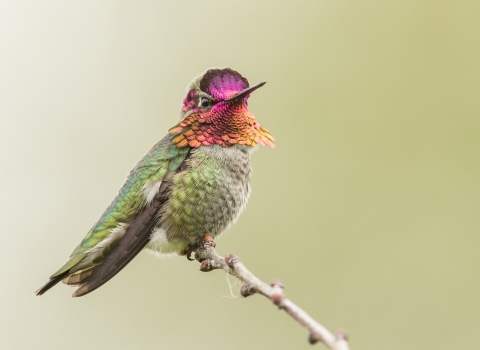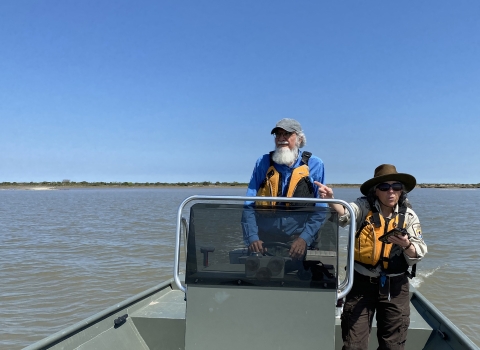The U.S. Fish and Wildlife Service's Bozeman Fish Technology Center announces the dedication of a new 16,500-square-foot laboratory and administrative building as the Robert G. Piper Building, after former Center Director and renowned fish culturist Robert Piper, a current resident of Bozeman, Montana. The public is invited to the dedication of the Piper Building located at 4050 Bridger Canyon Road in Bozeman on Wednesday, August 18, at 10:00 a.m. Following the dedication ceremony, the Center will be hosting tours of the facility.
"I am proud of the outstanding work that has gone into this architectural achievement, and I?m confident the Piper Building will prove invaluable to fisheries nationally and locally in Montana," said Center Director, Bill Krise. "We also anticipate the Piper Building and Center grounds will become an asset to the local community.?
Krise would like to see the facility evolve into a place for tourists and local community groups to learn about the U.S. Fish and Wildlife Service's fisheries program, and local fisheries research and conservation issues. The Center grounds provide the public an outstanding opportunity to bird watch, take walks, and enjoy the beautiful setting along Bridger Creek. Groups, families or individuals interested in tours are encouraged to schedule a tour during regular work hours. Tours for drop-in visitors are dependent on workloads and personnel availability.
The Piper Building provides 7 new state-of-the-art laboratories for a range of applications from organic and inorganic chemistry needed in fish nutrition and contaminants studies to fish physiology and necropsy necessary for fish reproduction and culture research. In addition, the Piper Building contains 13 offices, a library, as well as a small and large conference room. Architect Nick Marshall of Eskew, Dumez and Ripple in New Orleans, designed the building of cedar and aluminum siding accented with steel roofing, copper paneling, flagstone rock walls and black slate tile. The Piper Building also features two large indoor aquaria and an outdoor pond viewing area for public education and enjoyment.
The Bozeman Fish Technology Center is located at the mouth of Bridger Canyon in Bozeman, Montana and is home to research programs for threatened and endangered fish reproduction and culture, the Aquatic Animal Drug Approval Program, the U.S. Department of Agriculture, Agricultural Research Service trout nutrition program and several Montana State University research projects related to fisheries. Also, located on the property is the U.S. Fish and Wildlife Service's Fisheries Management Assistance Office, which assists states and tribes with a variety of fisheries issues.
Currently, the Center assists in recovery of pallid sturgeon in cooperation with Federal and State partners. The Center also maintains the only captive brood stock of fluvial Arctic grayling, native to the Big Hole River in Montana. Other projects include efforts to approve drugs for use on aquatic animals through the Food and Drug Administration and research into effective, sustainable and economical fish feeds for use in conservation of sensitive fish species and recreational and commercial fisheries.
Established in 1892, the Center is the site of one of the oldest Federal fish hatcheries in the country and retains some historic structures. In 1983, the site became the Bozeman Fish Technology Center, one of seven such technology centers nationwide intended to address fisheries conservation and management needs.
The U.S. Fish and Wildlife Service is the principal Federal agency responsible for conserving, protecting and enhancing fish, wildlife and plants and their habitats for the continuing benefit of the American people. The Service manages the 95-million-acre National Wildlife Refuge System, which encompasses 544 national wildlife refuges, thousands of small wetlands and other special management areas. It also operates 69 national fish hatcheries, 64 fishery resources offices and 81 ecological services field stations. The agency enforces federal wildlife laws, administers the Endangered Species Act, manages migratory bird populations, restores nationally significant fisheries, conserves and restores wildlife habitat such as wetlands, and helps foreign and Native American tribal governments with their conservation efforts. It also oversees the Federal Assistance program, which distributes hundreds of millions of dollars in excise taxes on fishing and hunting equipment to state fish and wildlife agencies.
- FWS -
For more information about the U.S. Fish and Wildlife Service,
visit our home page at http://www.fws.gov
Visit the Mountain Prairie region website at: http://mountin-prairie.fws.gov


